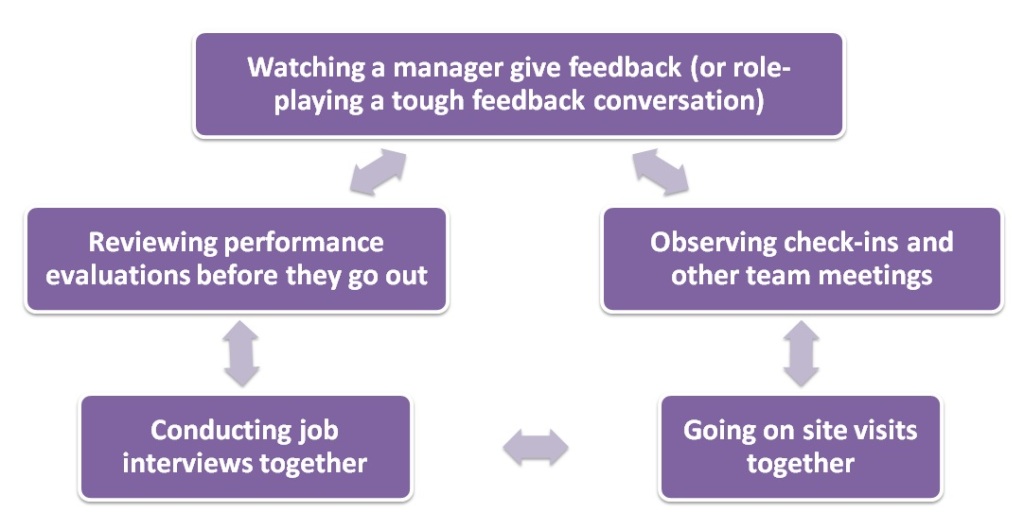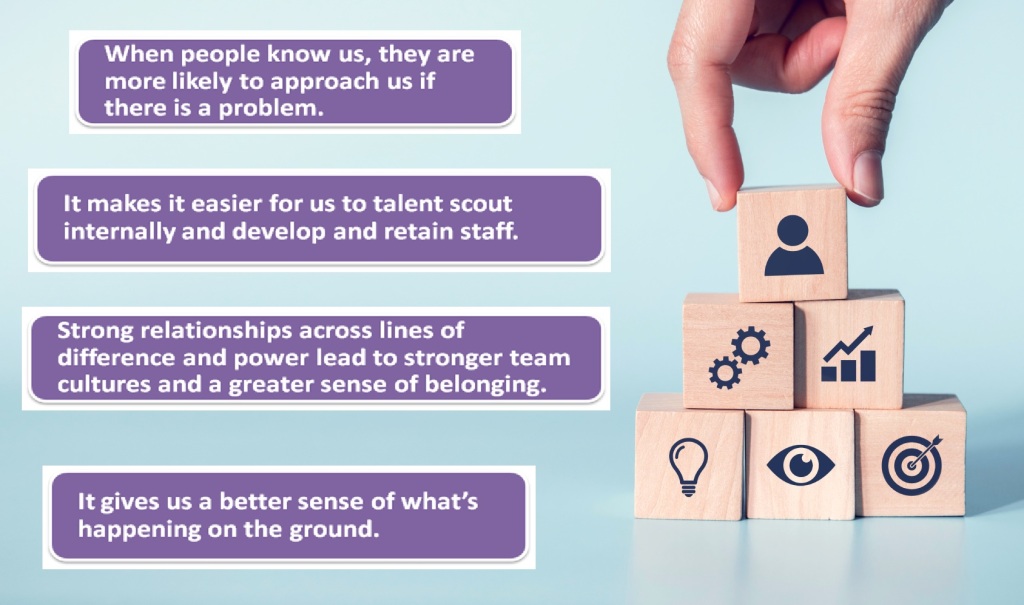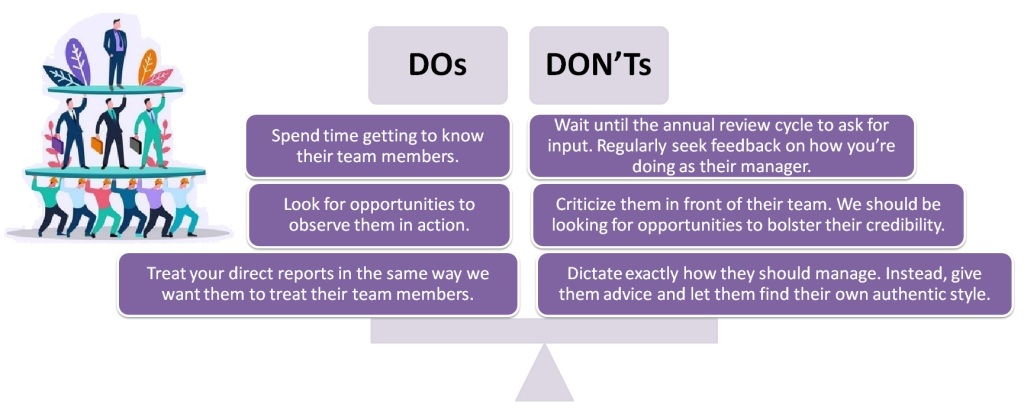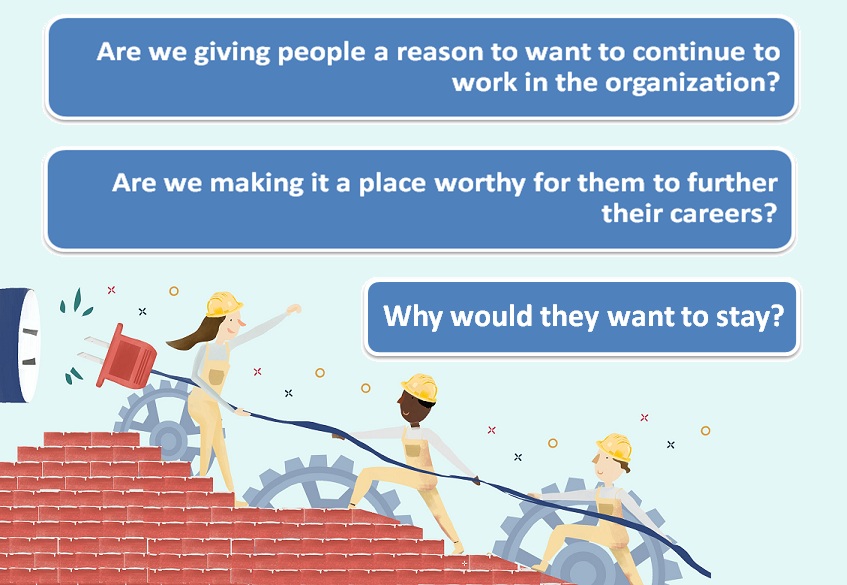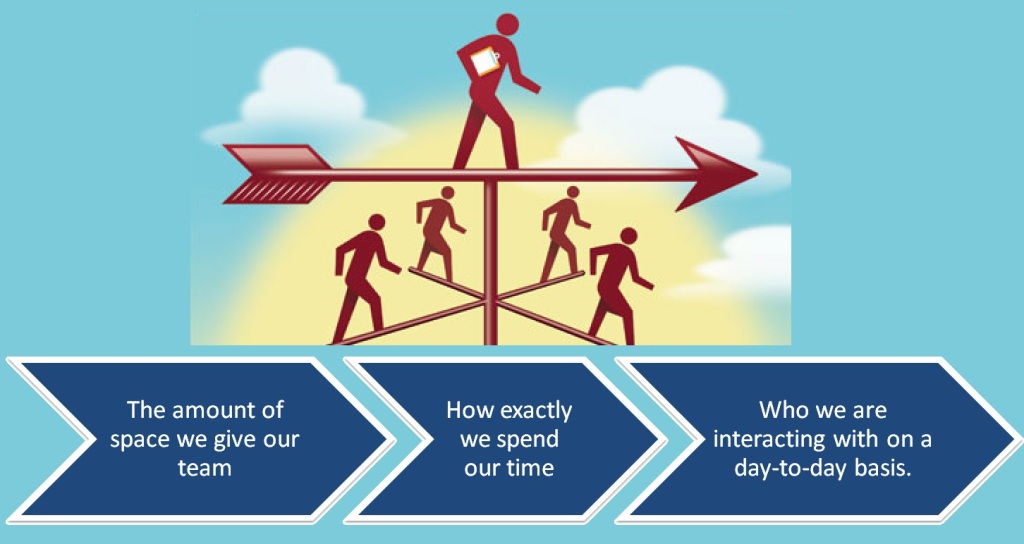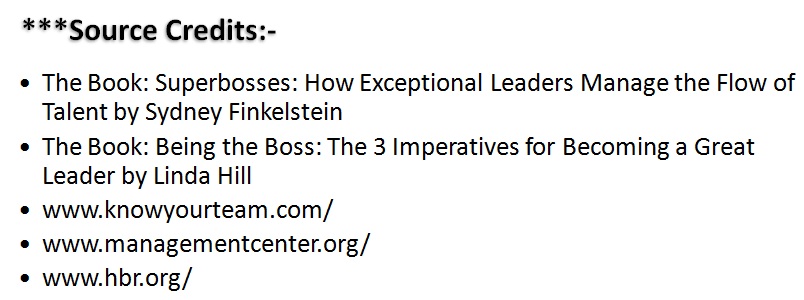
These two words have a special significant in the context of education and development, and although many people tend to use these terms interchangeably, there is a distinct difference between the two. Assessments and evaluations are two essential components in the process of teaching and learning. Although teaching, learning, and assessment have been there since forever, people still have dozens of misconceptions regarding them. An assessment is the process of investigating what and how participants are learning/ working, while evaluating involves making a judgment about the quality of participants’ learning/ work.
Assessment is a systematic process of collecting information from diverse sources about something or someone to gauge the skills, knowledge, and usage, whereas the meaning of evaluation is concerned about making a judgment about quality, skills, or importance or something or someone. The basic difference between assessment and evaluation lies in the orientation, i.e. while the assessment is process oriented, evaluation is product oriented.
Understanding the differences between assessment and evaluation is crucial for educators, researchers, and professionals involved in various assessment processes.
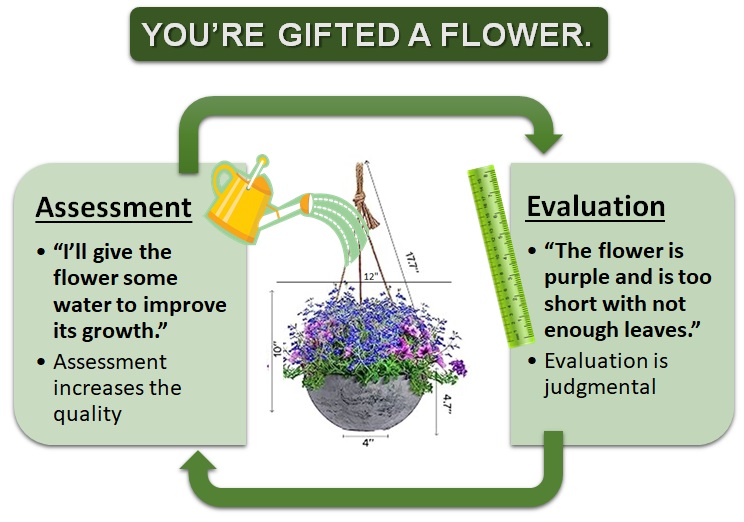
A Situation Narrative
Mrs Jayanthi Sharma (generic name) eagerly anticipated the upcoming parent-teacher conferences of the day. She had studied hard as a Childhood Education major and had worked diligently in her first year as a 3rd Std teacher at ABCD School (generic school). Jayanthi had planned interdisciplinary lessons, employed inquiry-based learning centers, and met regularly with individual students to ensure that they had mastered the skills as determined by the state standards.
Each student had a portfolio filled with dated representations of their work. Jayanthi understood the importance of specific and timely feedback and had painstakingly provided detailed written feedback on each work sample. She meticulously arranged the portfolios along with anecdotal notes and looked forward to sharing the accomplishments of the students with their family members. As last-minute jitters began to set in, Jayanthi realized that she had no grades for any of the students.

Jayanthi quickly realized she was not as prepared as she had anticipated.
What is Assessment
The word “assess” is derived from the Medieval Latin word “assessee” whose meaning is “fix a tax upon.” Assessment helps the educators to investigate what participants are learning and how well they are learning it, especially in relation to the expected learning outcomes of a lesson. The word assessment often is used to assess skills, abilities, aptitude, performance, and competence.
Thus, it helps the assessor to understand how the assesse understands the lesson, and to determine what changes need to be made to the teaching process. Thus it focuses on learning as well as teaching and can be termed as an interactive process. The purpose of conducting an assessment is to provide constructive feedback so that the assesse (the assessed person) can improve. Assessment is a continuous interactive process where two parties are involved.
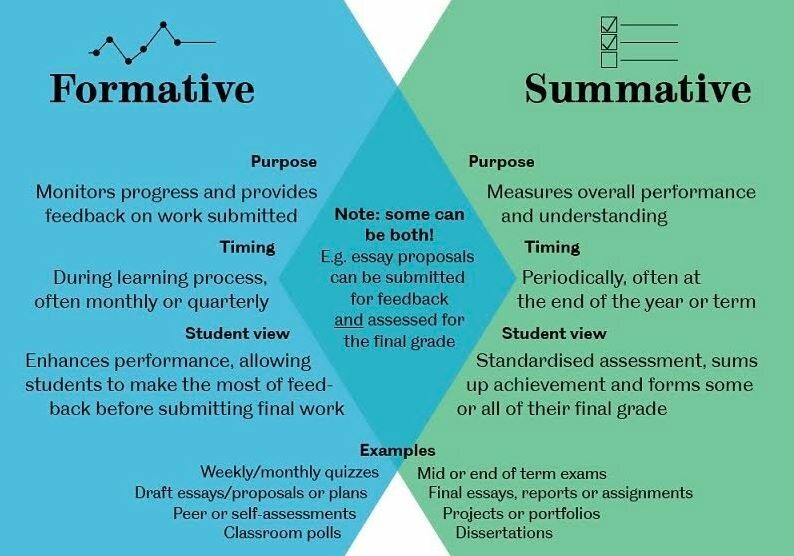
What is Evaluation
The meaning of the word “evaluate” is to make a judgment about something or someone to learn about their abilities or skills or qualities. The word evaluate is derived from the Latin word “valere” whose meaning is to “too strong, be of value, be well, or be worth.”
Evaluation focuses on what has been learned by the participants. The evaluation process is used to make a judgment about the quality of participants’ learning/work. It usually involves assignment of grades/ ranks. Evaluation activities such as examples, papers, etc. are considered to be a formal way to assess the expected outcomes of a course. The evaluation may not only judge knowledge but may also include other components such as attendance, participation in activities, discussions, etc.

The evaluation process may be conducted to compare the skills and qualities of two or more individuals. The person being evaluated must fulfill the criteria set by the evaluator. Unlike assessment, the result of does not provide constructive feedback, but it passes the judgment.
Differences between Assessment & Evaluation

Characteristics of Assessment & Evaluation
One of the most important characteristics of an assessment is it is an ongoing process. This means at various points in the learning process, the instructor uses different tools to measure the individual’s abilities and level of knowledge. Also, assessments are collaborative, consistent, reliable, and tailored to a specific context.
A good evaluation process is valid, reliable, and practical. Validity means that the evaluation must measure the subject using well-defined criteria that are tailored to the subject. Reliability means that the process must be consistent while practicality suggests that every evaluation should be realistic and achievable within its context of usage.
Illustrations of Assessment & Evaluation
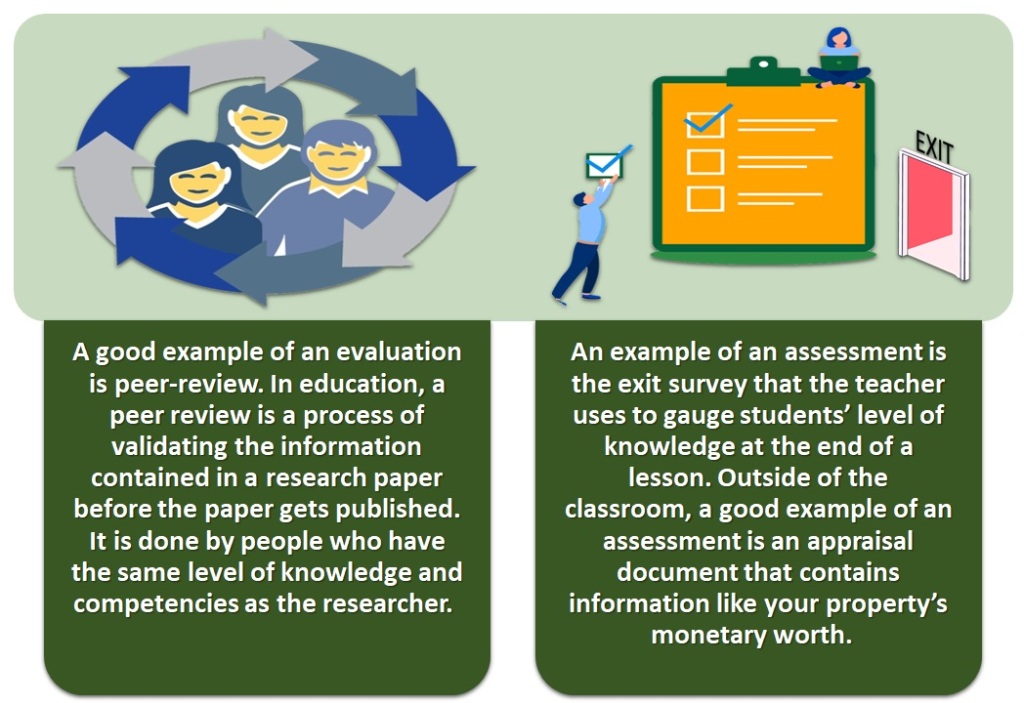
Assessment & Evaluation In Industry
To a large extent, both assessments and evaluations are used in similar industries. Like evaluations, assessments are very popular in educational research and human resources. They are used during employee engagement surveys to gather feedback from workers on how to improve the workplace. Different tools come in handy during assessments including concept maps, straw polls, surveys and questionnaires.
Evaluations are also used in the accounting/finance industries to determine the viability of a business. For example, before an investor gives money to an organization, they conduct a company evaluation to know if the business can provide returns on time. Common tools for evaluation include a rubric or some other standard grading criteria, focus groups, case studies, observation, and interviews.
Assessment & Evaluation in Survey Research
In survey research, assessments help the researcher to gather feedback on the quality of the systematic investigation. At the same time, assessments help to define and modify the research framework at different points in the process. Evaluations provide useful data for measuring the impact and success of the research. It helps you to determine how much progress has been made in the systematic investigation and if any changes need to be effected along the way.
Assessment vs Evaluation in Education
In educational contexts, assessments provide valuable information about a student’s knowledge, how much he has learned, the quality of this knowledge, and the different challenges faced during the learning process. Through assessments, teachers identify learning gaps and address them on time.
Evaluation provides useful data for building the core of the educational curriculum and improving it from time to time. For the learners, it validates their knowledge and determines how they progress from one level to the next. Data from an evaluation is a great way to show how successful a program is.
Benefits & Drawbacks of Assessment and Evaluation
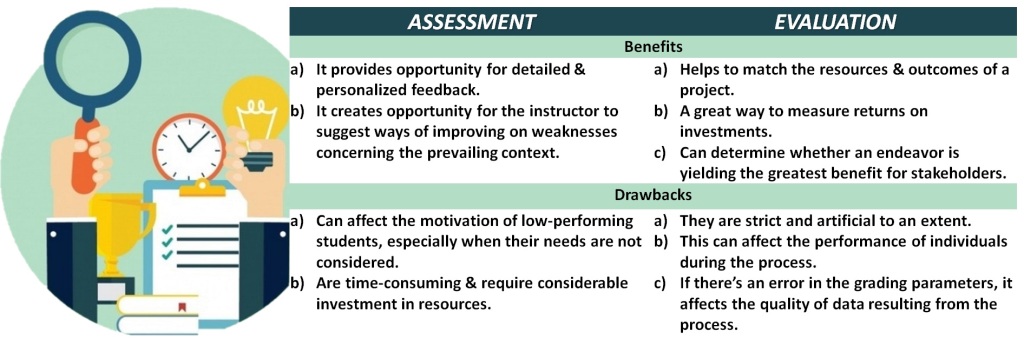
Contrast Outline- Assessment & Evaluation
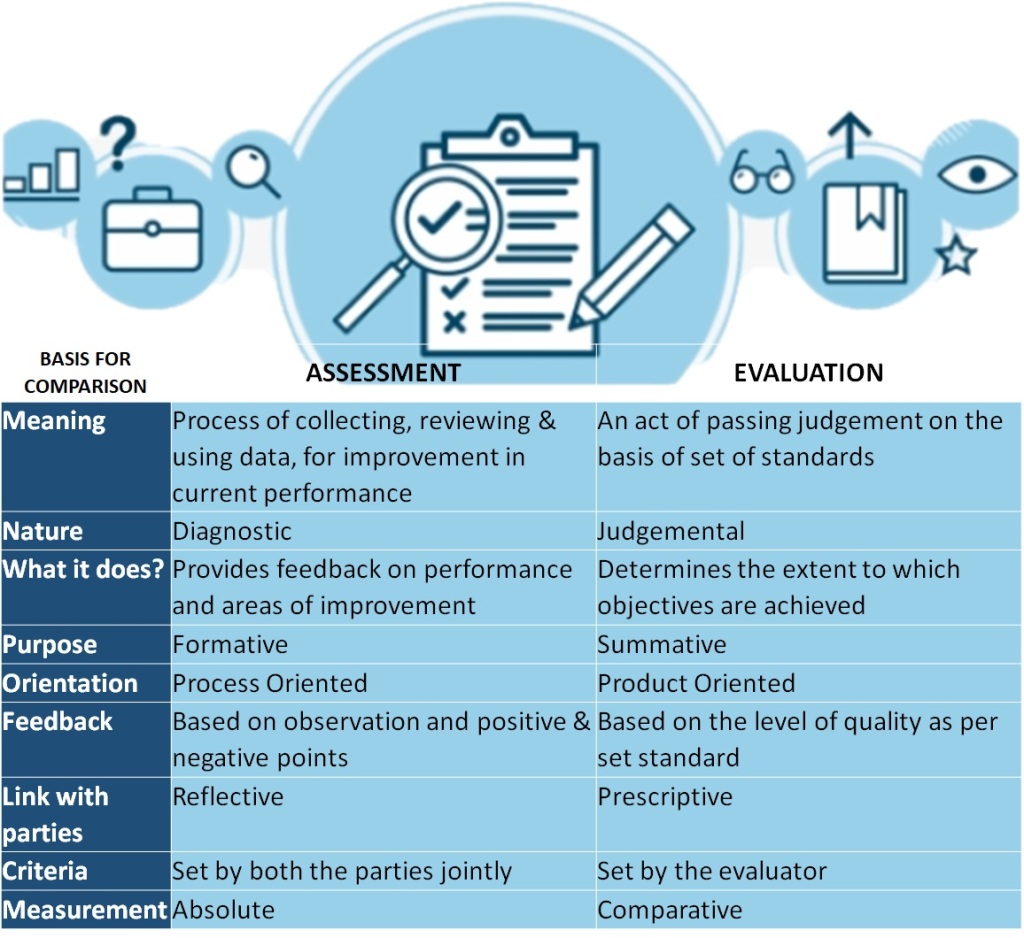
We measure distance, we assess learning, and we evaluate results in terms of some set of criteria. These three terms are certainly share some common attributes, but it is useful to think of them as separate but connected ideas and processes. Assessment and evaluation are integral processes used across diverse fields to measure performance, determine effectiveness, and guide decision-making. By understanding the key concepts, steps, and significance of assessment and evaluation, stakeholders can utilize these processes to improve outcomes, enhance quality, and drive progress. Assessment and evaluation are iterative processes, often involving multiple cycles of data collection, analysis, interpretation, and action. Continuous feedback and improvement are essential to maximize the value and effectiveness of these processes.

Content Curated By: Dr Shoury Kuttappa



